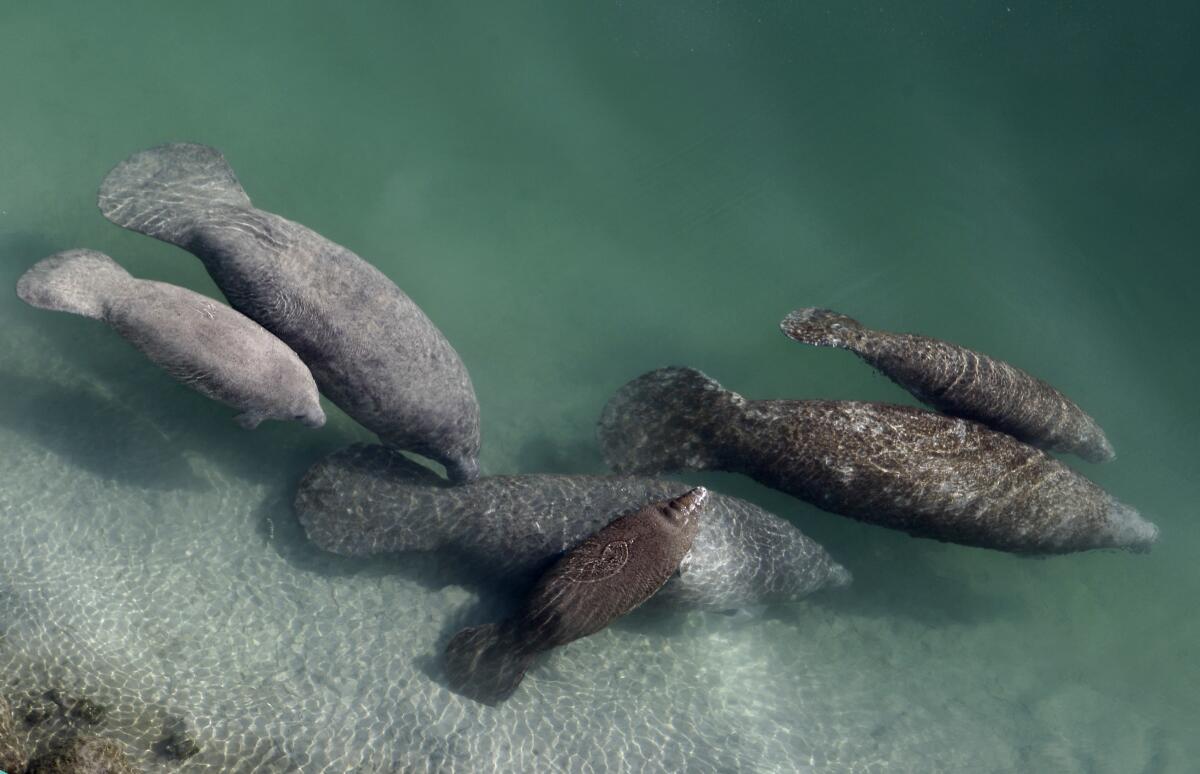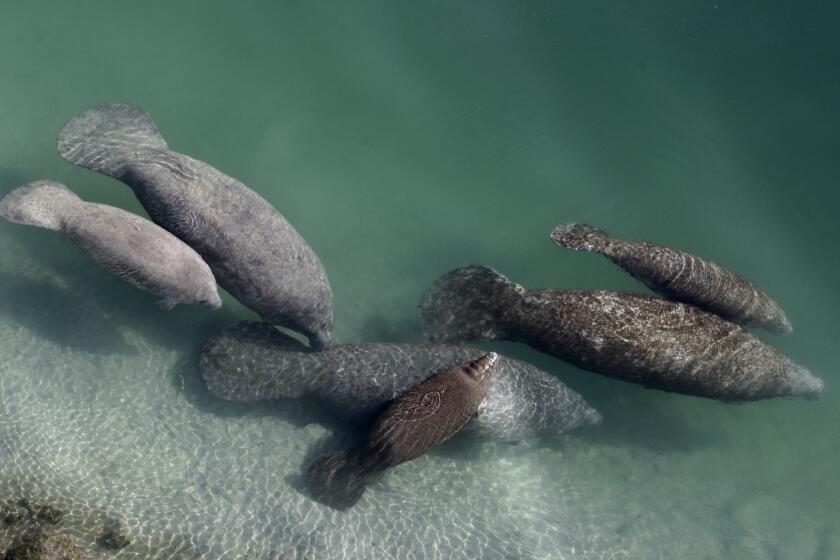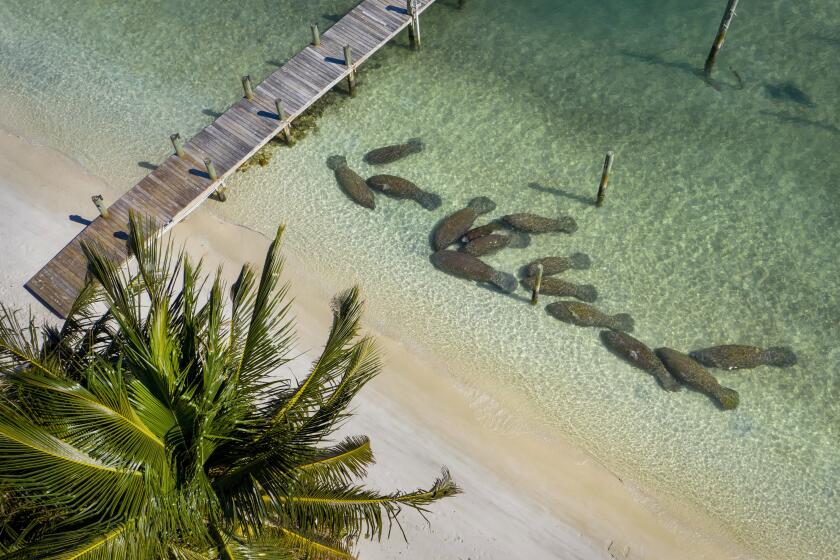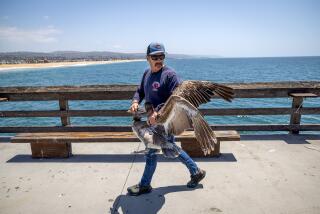Dozens of Florida manatees in rehab amid ongoing starvation

ST. PETERSBURG, Fla. — More than six dozen threatened manatees are in rehabilitation centers in Florida and elsewhere amid a chronic starvation problem caused by water pollution, wildlife officials said last week.
Most of the 79 manatees are being treated at three places: SeaWorld in Orlando and zoos in Tampa and Jacksonville, Teresa Calleson of the U.S. Fish and Wildlife Service said during an online news conference.
Soon, she said, SeaWorld will add space for 20 more of the marine mammals to receive care as cooler weather and lower ocean temperatures drive them to warmer waters to forage for dwindling food.
“We are now firmly into winter,” Calleson said. “I’m pretty optimistic about where we are now in terms of critical care space.”
About 20 young manatees that have been rehabilitated will be released in the wild by the end of February, she added. In 2022, 20 manatees in rehab died.
The rehab centers, including others in Texas, Ohio and Puerto Rico, are needed for manatees suffering through a widespread starvation event as pollution chokes off the seagrass they need to survive cold months.
Fewer manatee deaths have been recorded so far this year in Florida compared to 2021 but wildlife officials caution that chronic starvation remains a dire and ongoing threat to the marine mammals.
That’s led to cautious optimism as authorities continue an experimental lettuce feeding program at a power plant on Florida’s east coast, where manatees typically gather in winter.
“I do not feel like it’s nearly the volume we were experiencing in 2020 and 2021,” Andy Garrett of the Florida Fish and Wildlife Conservation Commission said of the number of dead and seriously ill manatees. “Why that is I am not sure.”
Manatees have not gathered at the Cape Canaveral feeding site in large numbers. Capt. Thomas Van Trees of the commission said the highest count so far is 75.
Officials said that a feeding station established along the state’s east coast has yet to entice manatees with romaine lettuce.
About 35,000 pounds of mostly donated romaine and butterleaf lettuce has been delivered to the site, Van Trees said.
“We’re fully operational. We’re really going full steam ahead,” he said.
Last year, about 202,000 pounds of lettuce was fed to manatees that can gather at Cape Canaveral by the thousands during winter.
The greater goal is to reduce pollution from agriculture, urban and sewage sources that has caused a die-off in the seagrass beds that manatees depend on for food, especially on the East Coast. One water management district found that there has been a 75% drop in seagrass in the critical Indian River Lagoon since 2009.
There are between 7,000 and 8,000 manatees — also known as sea cows — in Florida, according to state estimates. They are close relatives of elephants and can live up to 65 years, but they reproduce slowly.
More to Read
Sign up for Essential California
The most important California stories and recommendations in your inbox every morning.
You may occasionally receive promotional content from the Los Angeles Times.












